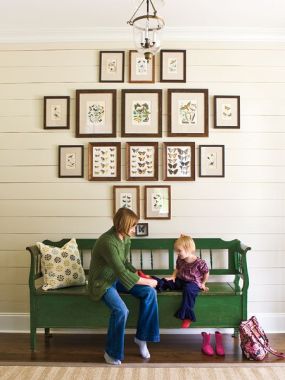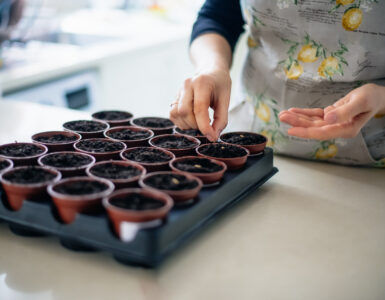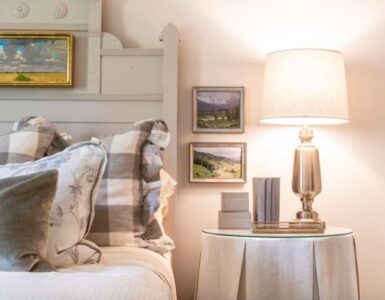Designer Lauren Oviatt with Oviatt-Pratt Designs explains how to get that perfect picture placement.
When taking on a room re-do, many people begin filling out the space in their homes by hanging photos and art on the walls. You might already have some art you like or brought with you from an earlier place and time. And additionally, it can be an inexpensive way to dramatically change a room. Warning: While it may seem one of the easier décor jobs to tackle, many still get it wrong. Pictures are often hung too high, are mis-matched, or seem to fight with existing décor. Today, designer Lauren Oviatt gives us her tips on perfect picture placement.
1. Use the Right Tools
Before you begin a hanging project, consider what you’ll be hanging and the required tools to make sure your frame is secure and level. Here are some basic hanging tools to keep on hand:
Level, hammer, ruler/measuring tape, nails, picture hangers, d-rings and picture wire, drywall anchors (for architectural fragments), toggle bolts & expanding bolts (for heavier pieces).
When in doubt about the weight of your art piece or the security of your nail, find a stud. Studs are typically framed at 16″ widths, but an inexpensive Studfinder will eliminate guesswork.
2. Consider Alternatives
Instead of hanging all your photographs/art on nails covering bare walls – consider alternatives. Group eclectic frames and photos by using frame rails, available at home stores or through catalogs. Try to mix small and large frames on each rail to create visual balance. If your home has decorative wainscoting or other architectural details featuring a shelf top, simply set pictures along the trim – it creates a gallery effect and is easily changed without damage to walls. Ribbon treatments are suitable for many areas and can be a custom feature in children’s rooms and more decorative spaces.
3. Maintain One Unifying Element
When planning a grouping of art or photographs, keep consistency among at least one element of your design. If you have various sized photographs, make sure they have similar mats and frames. Conversely, if your ‘material’ is all very similar in subject, think outside the box with varying frame styles and sizes. Just about everything benefits from being hung in multiples – if you are wary of messing up, lay pictures out on the floor to get an idea of the arrangement you’ll like.
4. Frame for the Piece, Not the Space
A tip I learned from a framer years ago is this – always frame for the piece, not the space where the piece will be hung. This is a no-fail universal rule. The photo or art will always be showcased if it is framed according to the subject… this rule ensures that your investment on proper framing will last a lifetime.
5. Height & Placement
Back to common mistakes – pictures are often hung too high, much too high in fact! Art galleries employ the rule of hanging pieces so their center is at eye level – or between 58 and 60 inches from the floor. This is a great place to start. Also, many rooms have well-thought out groupings, but they seem to float high above furniture pieces, creating a visual disconnect instead of harmonious focal point. Try pieces 6-8 inches above existing furniture groupings and notice how the vignette seems to come together. Last but not least, consider the size of the frame when hanging groupings. The width of the frame (and sometimes the mat as well) will give you a hint as to the spacing of the pieces. Separating pieces too far apart defeats the purpose of a ‘grouping’.
Lauren has always had a love for interior and landscape design, floral décor, and all things beautiful! Having lived in the South and also on the west coast before settling in Utah, her design instinct is to combine traditional elements and furniture with updated style and current color palettes. She is constantly looking for ways to infuse glamour into her projects while bringing a fresh perspective and an eye for tasteful, classic design. Lauren has degrees in both Public Relations and Interior Design and worked in wedding/event planning before transitioning to residential and hospitality design.
Oviatt – Pratt is a full-service design firm in business for over 25 years, specializing in high-end residential and commercial design. The scope of their projects ranges from simple home renovations to large-scale construction projects where design is implemented from the first wall color choice to the final finishing touches. With direct access to over 90 upholstery, accessory and furniture lines, Oviatt-Pratt’s designers are able to provide each client with pieces that are particular to his or her taste and style. Their showroom is open to the public Monday through Friday.
Lauren Stimpson Oviatt
Oviatt-Pratt & Associates
Interiors & Design
lauren@oviattpratt.com
www.oviattpratt.com
801.451.4531















Add comment